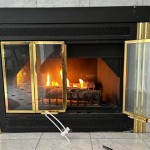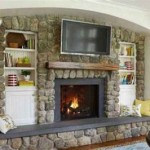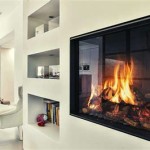```html
Fireplace Vent Covers: Understanding Their Purpose and Function
Fireplace vent covers are essential components for maintaining the safety, efficiency, and aesthetic appeal of a fireplace. They serve multiple purposes, from preventing drafts and energy loss to keeping unwanted pests and debris out of the home. Understanding the different types of vent covers, their materials, and installation methods is crucial for homeowners seeking to optimize their fireplace usage and home environment.
A fireplace, while providing warmth and ambiance, is essentially an opening to the outside. Without proper sealing and covering, a significant amount of heat can escape during colder months, leading to increased energy bills. Conversely, during warmer months, outside air and humidity can enter the home, impacting the efficiency of air conditioning systems. Therefore, a well-chosen and properly installed fireplace vent cover plays a vital role in mitigating these issues.
The term "fireplace vent cover" can refer to a few different components. It can describe the screen that sits in front of the fireplace opening, protecting against sparks and embers. It can also refer to devices that seal the flue, preventing airflow through the chimney. Finally, it can sometimes be used to describe decorative grates placed over vents related to the fireplace, such as those for a blower system. This article will primarily focus on vent covers designed to seal the chimney and prevent airflow.
Preventing Energy Loss and Drafts
One of the primary functions of a fireplace vent cover is to prevent energy loss. A chimney, even when the fireplace is not in use, acts as a conduit for air movement. Warm air from the home can rise and escape through the chimney, while cold air can descend, creating drafts. This constant exchange of air leads to significant energy waste, forcing heating and cooling systems to work harder to maintain a comfortable indoor temperature.
Fireplace vent covers, designed specifically to seal the chimney opening, effectively block this airflow. By creating an airtight seal, these covers prevent warm air from escaping in the winter and cool air from escaping in the summer. This results in reduced energy consumption and lower utility bills. The effectiveness of a vent cover in preventing energy loss depends on the quality of the seal and the insulation properties of the materials used in its construction.
Drafts caused by an open chimney can also be a significant source of discomfort. Cold drafts can make a room feel chilly, even when the heating system is working effectively. By eliminating these drafts, a fireplace vent cover contributes to a more comfortable and consistent indoor temperature. This is particularly important in homes with older, less energy-efficient fireplaces.
Furthermore, preventing drafts can also reduce the risk of condensation forming inside the chimney. Warm, moist air rising from the home can condense on the cold surfaces of the chimney, leading to potential water damage and the growth of mold and mildew. A well-sealed vent cover helps to prevent this condensation by limiting the airflow through the chimney.
Protecting Against Pests and Debris
In addition to preventing energy loss, fireplace vent covers also serve as a barrier against unwanted pests and debris. Chimneys can be attractive entry points for animals such as birds, squirrels, raccoons, and even insects. These animals can nest in the chimney, creating a fire hazard and causing damage to the chimney structure.
A properly installed fireplace vent cover with a mesh screen or other protective barrier prevents animals from entering the chimney. This protects both the animals and the homeowners, as removing an animal nest from a chimney can be a costly and time-consuming process. Furthermore, the presence of animals in the chimney can create unpleasant odors and attract other pests to the home.
Debris such as leaves, twigs, and other organic matter can also accumulate in the chimney, creating a fire hazard and blocking the flow of smoke and gases. A vent cover prevents this debris from entering the chimney, ensuring that the chimney remains clear and functional. Regular inspection and cleaning of the vent cover are essential to maintain its effectiveness in preventing debris accumulation.
The type of vent cover used is important for pest control. A simple cap might keep out larger animals, but a finer mesh is needed to prevent insects from entering. Choosing a cover with the appropriate mesh size depends on the local environment and the types of pests common in the area.
Types of Fireplace Vent Covers and Materials
Fireplace vent covers are available in a variety of types and materials, each with its own advantages and disadvantages. The choice of vent cover depends on factors such as the type of fireplace, the size of the chimney, and the homeowner's budget and aesthetic preferences.
One common type of vent cover is the chimney cap. A chimney cap is a metal or ceramic cover that fits over the top of the chimney, providing a barrier against rain, snow, animals, and debris. Chimney caps are typically made of stainless steel, copper, or galvanized steel. Stainless steel is a durable and corrosion-resistant option, while copper offers a more aesthetically pleasing look. Galvanized steel is a more affordable option but may not be as durable as stainless steel or copper.
Another type of vent cover is the flue damper. A flue damper is a metal plate that can be opened and closed to control the flow of air through the chimney. Flue dampers are typically located inside the chimney, just above the firebox. While they can help to reduce drafts and energy loss, flue dampers are not as effective as chimney caps in preventing animals and debris from entering the chimney. Furthermore, older flue dampers may not seal tightly, allowing air to leak through even when closed.
Top-sealing dampers offer an improved solution. These dampers are installed at the top of the chimney and provide a much tighter seal than traditional flue dampers. They are typically operated by a cable or chain that runs down the chimney to the firebox. Top-sealing dampers are more effective at preventing energy loss and drafts, and they also help to keep out animals and debris.
Materials used in fireplace vent covers also play a critical role in their performance and longevity. Stainless steel is a popular choice for its durability, corrosion resistance, and ability to withstand high temperatures. Copper is another durable option that offers a more aesthetically pleasing look. However, copper is more expensive than stainless steel and may require more maintenance to prevent tarnishing.
Galvanized steel is a less expensive option but may not be as durable as stainless steel or copper. Galvanized steel is prone to rust and corrosion, particularly in areas with high humidity or salt air. Therefore, it is important to choose a high-quality galvanized steel vent cover with a protective coating to extend its lifespan.
The size and shape of the chimney also influence the choice of vent cover. Chimneys come in various shapes and sizes, and it is important to choose a vent cover that is properly sized to fit the chimney. A vent cover that is too small may not provide adequate protection, while a vent cover that is too large may be difficult to install and may not seal properly.
Finally, it is important to consider the aesthetic appeal of the vent cover. While functionality is the primary consideration, homeowners may also want to choose a vent cover that complements the style of their home. Vent covers are available in a variety of styles and finishes, allowing homeowners to choose an option that enhances the overall look of their fireplace and chimney.
Proper installation of a fireplace vent cover is crucial for its effectiveness. Incorrect installation can lead to air leaks, reduced protection against pests and debris, and even damage to the chimney. It is generally recommended to hire a qualified professional to install a fireplace vent cover, particularly for top-sealing dampers and other more complex installations.
Regular maintenance of a fireplace vent cover is also essential to ensure its continued performance. This includes inspecting the vent cover for damage, cleaning it to remove debris, and ensuring that it is properly sealed. Depending on the type of vent cover and the local environment, maintenance may need to be performed annually or more frequently.
```
Modern Grilles Kratki

Modern Grilles Kratki

Fireplace Vent Covers Stop Drafts Instantly

Remove Or Cover Up Old Heatilator Vents Hearth Com Forums Home Fireplace Brick Makeover

Magnetic Fireplace Vent Covers Draft Stoppers 30sizes In

Leye Magnetic Fireplace Draft Stopper Cover To Block Cold Air From Vent Prevent Heat Loss Magnet Screen Indoor Chimney Blocker Covers 40 X 4

Magnetic Fireplace Draft Stopper Vent Covers Screen Insulation Blocker For Winter Indoor Prevent Cold Air And Heat Loss Black Temu

Magnetic Fireplace Draft Stopper 2pcs Vent Covers Screen Insulation

Termination Cap Cover For Direct Vent Fireplace Draft Stopper

How To Choose Vent Covers Christopher Scott Cabinetry
Related Posts








